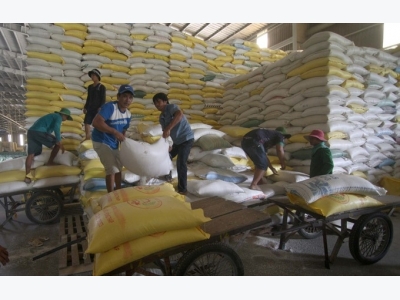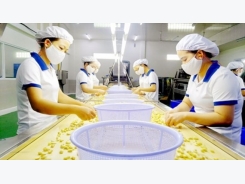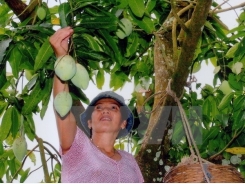Rice recovery no cause for cheer

Rice for exports at the Đồng Tháp Food Company in the southern province of Đồng Tháp. — VNA/VNS Photo Vũ Sinh
HÀ NỘI — Recent gains in the volume and value of rice exports can be attributed more to low prices than to better quality or greater market penetration, experts say.
According to the Ministry of Agriculture and Rural Development (MARD), in the first six months of 2017, rice export turnover reached 2.8 million tonnes, up 6.3 per cent in quantity and 4.9 per cent in value over the same period last year.
While this marked a recovery after a somewhat quiet period, Trần Ngọc Trung, director of the Vinh Phát Investment Corporation, said the real reason behind the increase was lower prices offered by Vietnamese exporters compared to other countries’ in the region. He explained that Vietnamese businesses did not have enough information regarding the international rice market to increase their own prices in time.
Looking at statistics for the past two months, at the beginning of May, the price for Vietnamese 5 per cent broken white rice was about US$350 to $354 per tonne, whereas the same type of rice from a Thai exporter was priced at $390 per tonne, $388 per tonne for Indian rice and a whopping $412 per tonne for Pakistani rice.
It is understandable why international buyers would opt for Vietnamese rice, pushing the turnover way up in June, Trung said.
This trend is further confirmed by data from the Việt Nam Food Association (VFA), in which price hikes occurred mostly in the first three months of 2017, while the average price for exported rice since April 2017 has been recorded as lower than the previous year, despite the average of six months being $13.2 per tonne higher than the same period in 2016.
Of particular note is that rice export prices dropped $20 per tonne and $11.38 per tonne in April and May 2017 respectively over the same months year.
Vietnamese rice exporters agree that for the first five months, the rice export market was quiet as businesses had to wait for the Government to finish signing contracts with traditional markets like Malaysia, Bangladesh and the Philippines.
When the contracts were finalised in June, market prices had already surpassed the prices quoted in the signed contracts.
It is estimated that the price for 5 per cent broken white rice on the open market is about $405 to $410 per tonne, while the price agreed to in the contracts is just $370 per tonne.
The VFA further said that although at the moment, the majority of Vietnamese rice for export have around the same prices as the same varieties from India, Myanmar or Pakistan, which is only $10 to $15 per tonne lower than Thailand’s prices, the chief concern for Vietnamese producers was that they failed to adjust prices as demand rose, which will ultimately result in a loss.
Thailand has sold most of its stored rice, while Bangladesh is having a rice shortage after crop losses due to natural causes and the Philippines is looking to import more rice.
Lâm Anh Tuấn, director of the Thịnh Phát Foodstuffs Company Limited in Bến Tre Province, said he saw the open market to be a better profit-making opportunity than the Government’s collective contracts. He also said that another concern for Vietnamese rice producers is that production costs may exceed export prices. For example, the price of whole grain rice has increased by $44.5 per tonne to $370 per tonne, so for producers to turn it into white rice, the current export prices of $370 to $400 per tonne could result in their making a loss.
Nguyễn Văn Đôn, director of Tiền Hưng Company Limited in Tiền Giang Province, said he also favoured the free market, saying it will be an opportunity for Vietnamese producers to increase exports of high quality rice.
The VFA gave cautious agreement, saying if individual businesses focused too much on meeting the demand in the free markets, they would fail to produce the agreed amounts for collective contracts. This means that the Vietnam Northern Food Corporation and its southern counterpart will have to compensate, as happened once in 2009. Nonetheless, increasing added value on the free rice market will be a good thing for small and medium-sized enterprises, it said.
Vietnamese businesses should always be aware of regional competition, whether it is through lower prices or better quality. It is crucial that they follow market trends to make timely adjustments and be well prepared for any change in demand and supply, said Tuấn.
Related news
Tools

Phối trộn thức ăn chăn nuôi

Pha dung dịch thủy canh

Định mức cho tôm ăn

Phối trộn phân bón NPK

Xác định tỷ lệ tôm sống

Chuyển đổi đơn vị phân bón

Xác định công suất sục khí

Chuyển đổi đơn vị tôm

Tính diện tích nhà kính

Tính thể tích ao




 Vietnamese private rice exporters can bid for Philippines…
Vietnamese private rice exporters can bid for Philippines…  Expanding export markets for agricultural products
Expanding export markets for agricultural products